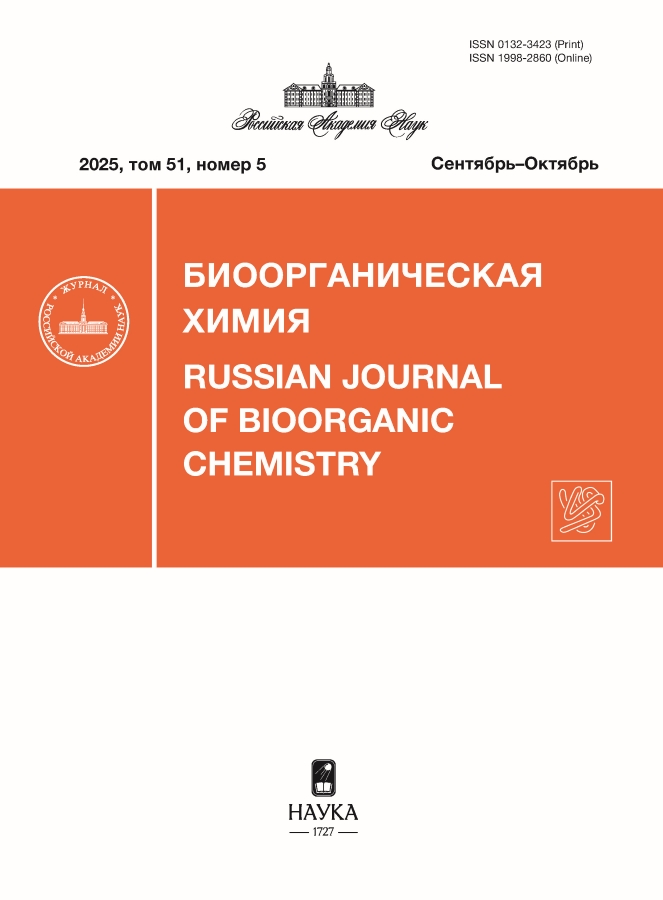Bioorganičeskaâ himiâ
The Journal was founded in 1975 by Prof. Yurii A. Ovchinnikov. The Editorial Board uses the term "bioorganic chemistry" to cover a wide range of problems related to the investigation of the structure and function of biomolecules using the methods of organic, biochemical and physical chemistry.
The journal is intended for scientists, for those in the health professions, educators, and students in universities and researchers in industrial, medical, agricultural, and environmental control laboratories.
Russian Journal of Bioorganic Chemistry (Bioorganicheskaya Khimiya) welcomes papers on all aspects of bioorganic chemistry, biochemistry, cell and molecular biology, genomics, proteomics, bioinformatics, immunology, molecular virology, molecular evolution and developmental biology.
The Journal publishes reviews, minireviews, research articles and theoretical investigations, hypothesis and short communications.
The Journal is published in Russian (under the name Bioorganicheskaya Khimiya in the Russian Federation) and in English (under the name Russian Journal
of Bioorganic Chemistry) six times a year by Russian Academy of Sciences (IKC "Akademkniga") in Moscow (Russia) and Pleiades Publishing Inc. in the United States. The English edition is distributed worldwide by Springer.
Articles are published in Russian and English. Publication of articles in the Russian Journal of Bioorganic Chemistry (Bioorganicheskaya Khimiya) – free.
Media registration certificate: № 0110214 от 08.02.1993
Edição corrente
Volume 51, Nº 5 (2025)
- Ano: 2025
- Artigos: 25
- URL: https://jdigitaldiagnostics.com/0132-3423/issue/view/14309
Edição completa
Articles
PREDISLOVIE K SPETsIAL'NOMU VYPUSKU ZhURNALA, POSVYaShchENNOMU 50-LETIYu KAFEDRY BIOORGANIChESKOY KhIMII BIOLOGIChESKOGO FAKUL'TETA MOSKOVSKOGO GOSUDARSTVENNOGO UNIVERSITETA IMENI M.V. LOMONOSOVA
 729-730
729-730


ОБЗОРНЫЕ СТАТЬИ
Modern Laboratory Test-Systems as Platforms for Validation of Clinically Promising T-Cell Receptors
Resumo
 731-742
731-742


Discovery and Identification of Plant Regulatory Peptides
Resumo
 743-757
743-757


RNA-Interference as a Method for Validation of Pharmacological Targets in Fibrosis Treatment
Resumo
 758-768
758-768


Small Non-Coding RNAs of Bacteria are Global Regulators of the Bacterial Life Cycle
Resumo
 769-784
769-784


Non-Classical Cannabinoid Receptors: Modern Concepts of Signal Transmission Functions and Mechanisms
Resumo
 785-811
785-811


8-Oxo-2'-deoxyguanosine – Oxidative Stress Control
Resumo
 812-819
812-819


ЭКСПЕРИМЕНТАЛЬНЫЕ СТАТЬИ
Proinflammatory Phenotype of CD161+ Double-Negative T Cells
Resumo
 820-830
820-830


Three-Finger Viper Toxins – cDNA Cloning and Expression in E. coli Using a Chimeric (Hybrid) Construction with a Partner Protein SUMO
Resumo
 831-843
831-843


Improved Efficiency of OX40L-Based Gene Therapy Using a Non-Viral Delivery System in Fibroblast-Enriched Mouse Tumor Models
Resumo
 844-852
844-852


Molecular Probes for Visualization of Nicotinic Acetylcholine Receptors Based on Snake Three-Finger Toxins and a Red Fluorescent Protein
Resumo
 853-862
853-862


Cytoskeletal Regulator Zyxin Stimulates Translocations of YAP into Xenopus laevis Embryo Cell Nuclei
Resumo
 863-872
863-872


Transcriptome Analysis of Zyxin Cytoskeletal Protein Levels Influence on Metabolism and Signaling Pathways in a Model of Xenopus laevis Embryos
Resumo
 873-881
873-881


Targeted Nanoliposomes Loaded with IR780 Dye as a Multifunctional Nanoplatform for Photothermal and Photodynamic Cancer Therapy
Resumo
 882-891
882-891


Development of an Experimental Intracranial PDX Model of Human Glioblastoma in NSG Mice
Resumo
 892-898
892-898


Development of a Bacterial Expression System for Producing 15N/13C-Labeled Neuroglobin and Cytochrome C
Resumo
 899-910
899-910


Properties of Potassium Channel Kv1.1 on the Basis of Fluorescent Dimer of Alpha-Subunits mKate2-Kv1.1-Kv1.1 in Neuro-2a Cells
Resumo
 911-919
911-919


Study of the Antiproliferative Activity of a Humanized Antibody to the Cancer-Testis Antigen PRAME
Resumo
 920-930
920-930


Influence of the Cultivation Conditions of Glioblastoma Cells on the Expression of Transcription Factors Genes
Resumo
 931-939
931-939


Oral Indole-3-acetate Supplementation Increases the Abundance of Bifidobacterium pseudolongum and Akkermansia muciniphila in the Intestine of Mice on a High-Fat Diet
Resumo
 940-952
940-952


Effect of STK11 Mutation in the LLC1 Mouse Lewis Lung Adenocarcinoma Line on Sensitivity to Particle Radiotherapy
Resumo
 953-965
953-965


Changes in the Protein Composition of the Exiguobacterium sibiricum Membrane with Decreasing Temperature: a Proteomic Analysis
Resumo
 966-978
966-978


NLS Peptide Improves the Efficiency of pDNA Delivery into Eukaryotic Cells by Cationic Liposomes
Resumo
 979-987
979-987


Construction of a Producer Strain of the Fibrinolitic Enzyme PAPC Based on Pichia pastoris Yeast
Resumo
 988-1000
988-1000


ПИСЬМА РЕДАКТОРУ
Ionizable Cationic Lipid for Intracellular RNA Delivery
Resumo
 1001-1008
1001-1008












